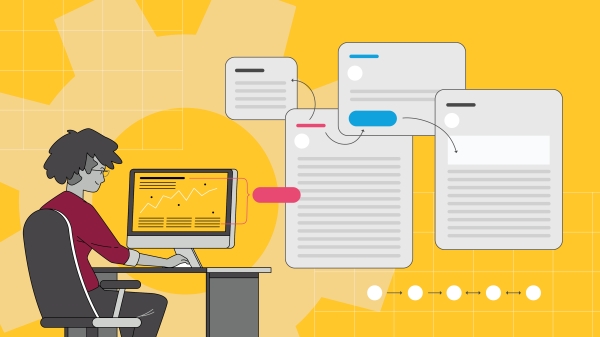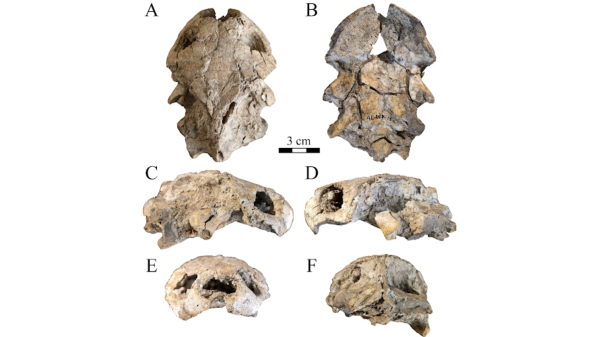Congressional passage of the national infrastructure investment act earlier this month means more than half a trillion dollars in new funding is designated to repair and upgrade American road networks, power grids, water systems and more.
While much of that work is remedial, there is significant need to improve the standards and specifications of existing infrastructure. For example, technological advances in electronics for communications, transportation and other fields are pushing the capacity and stability limits of conventional electrical conductors like copper. Progress really may come down to the wire available for innovation.
Wonmo Kang, an assistant professor of aerospace and mechanical engineering in the Ira A. Fulton Schools of Engineering at Arizona State University, says transportation offers a helpful analogy for the material limits being tested by continuous expansion of power demand in every arena of life.
“We can think of electrical current or the flow of electrons like the movement of cars on a road,” Kang said. “Traditional copper wire conductors can be compared to local city streets. They have lower current density limits, like a two-lane road’s capacity for traffic. They also have lower electron mobility, similar to urban speed limits, and discontinuous electron paths that operate like stop signs and traffic signals.”
But our increasingly wired world will soon need higher current density limits, greater electron mobility and more continuity in electron paths than copper conductors allow. In other words, we will need more superhighways rather than surface streets.
Kang says that relevant materials science research has focused on the development of carbon-metal composites to improve performance. One example combines copper with graphene, a nanomaterial with high current-carrying capability. Graphene is also chemically inert, which offers greater resistance to oxidation and corrosion compared with purely copper wire. This robust trait is important for electrical applications in harsh environmental conditions, such as high temperatures.
“But existing approaches to this kind of composite wire apply relatively small-scale carbon materials, and they unavoidably have interfaces between the carbon structures as well as between the carbon and the metal,” Kang said. “Those interfaces represent discontinuities in electron paths — like stop signs or red lights — so the potential advantages of this kind of hybrid material are not being realized.”
Solving this challenge is the focus of a new research paper in the scientific journal Advanced Materials. Kang and his team at the School for Engineering of Matter, Transport and Energy, one of the seven Fulton Schools at ASU, have successfully integrated the advantages of graphene and copper into a highly effective conductor.
“After several attempts, we determined how to control the thickness, continuity and quality of the graphene in the composite,” he said. “These are the first copper wires to be coated by continuous, high-quality, thick graphene tubes, and the results surpass the performance of any previous efforts.”
Kang’s axially continuous graphene-copper (ACGC) wire demonstrated a 450% increase in the current density breakdown limit. That represents a lot more lanes on the highway for electron traffic.
Additionally, the research reveals that the continuous graphene layers result in 41% higher electrical conductivity than purely copper wire, which is like traffic moving at much higher speeds.
Plus, the thermal stability of the new composite, or its resistance to current flow, after thermal cycles up to 450 degrees Celsius is 41% percent better (meaning lower) than copper wire.
Finally, the heat dissipation rate of the ACGC is 224% higher than copper, which enhances the cooling of the conductor at high current densities.
“These promising results and our fundamental understanding of the underlying mechanisms can yield a technical paradigm shift,” Kang said. “The excellent thermoelectrical properties of ACGC can offer new engineering solutions to the challenges of modern electric power systems requiring high-power transmission, including in aerospace, transportation, communications and many other industries.”
Kang says he is grateful for the work of his team members, Hamzeh Kashani and Chunghwan Kim, as well as for research funding from the Office of Naval Research (ONR). Within the ONR, he offers special thanks to program officer Ignacio Perez for his support.
Moving forward, Kang’s team will work to improve the performance of ACGC even further while reducing its manufacturing costs.
Top photo: Technological innovation could soon be hampered by the capacity limits of traditional conductors like copper, so ASU engineering research led by Wonmo Kang has developed a new high-performance composite wire to keep the wheels of progress turning. Illustration courtesy of Shutterstock
More Science and technology

When facts aren’t enough
In the age of viral headlines and endless scrolling, misinformation travels faster than the truth. Even careful readers can be swayed by stories that sound factual but twist logic in subtle ways that…

Scientists discover new turtle that lived alongside 'Lucy' species
Shell pieces and a rare skull of a 3-million-year-old freshwater turtle are providing scientists at Arizona State University with new insight into what the environment was like when Australopithecus…

ASU named one of the world’s top universities for interdisciplinary science
Arizona State University has an ambitious goal: to become the world’s leading global center for interdisciplinary research, discovery and development by 2030.This week, the university moved…
